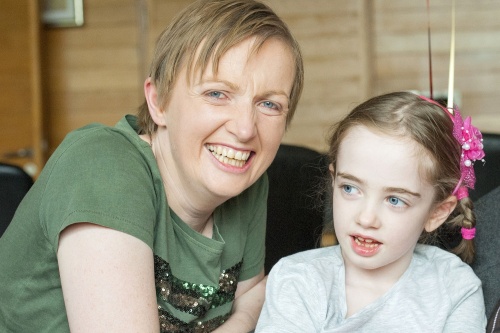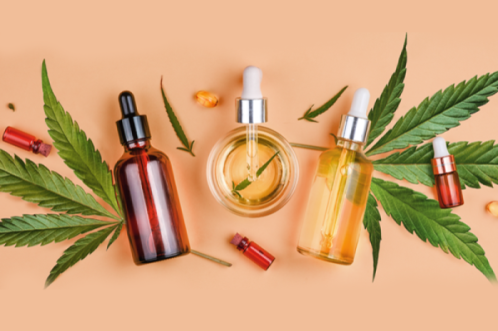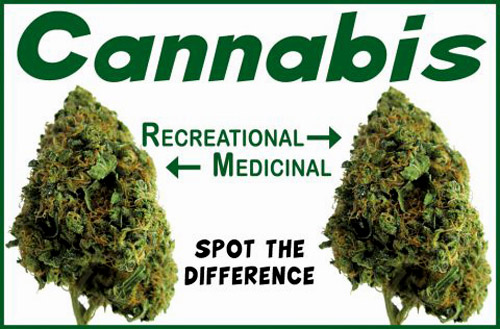 The use of five or more pharmaceutical medications on a daily basis, commonly called polypharmacy, is a modern health crisis. A lack of knowledge about drug interactions increases the likelihood of side effects or adverse reactions, with many patients reporting lower quality of life as a result. Cannabis could be the safer alternative prescribers and patients are looking for as patients using cannabis are often able to reduce the number of prescription medicines they are taking while better managing their symptoms.
The use of five or more pharmaceutical medications on a daily basis, commonly called polypharmacy, is a modern health crisis. A lack of knowledge about drug interactions increases the likelihood of side effects or adverse reactions, with many patients reporting lower quality of life as a result. Cannabis could be the safer alternative prescribers and patients are looking for as patients using cannabis are often able to reduce the number of prescription medicines they are taking while better managing their symptoms.
Polypharmacy is more common in older people who may have several chronic diseases requiring management. In the United States, nearly 36% of older adults take five or more prescription medicines. This increases to over 67% when you add over-the-counter medications and supplements. Just over 36% of older Australians (aged 75+) are affected by continuous polypharmacy. In the United Kingdom, 6.5% of hospital admissions occur due to adverse drug reactions (ADR) and approximately 90% of older adults hospitalised due to ADR are taking multiple medications. Statistically, the more medicines prescribed, the higher the risk of adverse drug reactions. 
More drugs doesn’t necessarily mean a patient’s symptoms are well managed or they have better quality of life. A 2019 study investigated the use of polypharmacy in palliative care and found patients actually experienced lower quality of life and higher symptom burden. The authors suggested this could be attributed to medication-associated symptoms rather than the diseases themselves; something known as the “prescribing cascade”. A prescribing cascade occurs when a new medicine is prescribed to ‘treat’ an adverse reaction to another drug in the mistaken belief that a new medical condition requiring treatment has developed.
British professor of molecular and clinical pharmacology, Sir Munir Pirmohamed, suggested pharmaceutical drugs were ‘poisoning’ the elderly. He explained to a House of Lords committee hearing on healthier living in old age, “Those drugs are used at conventional doses … tested in younger populations who had exclusion criteria for trials – so they have been tested in people who don’t have the multiple diseases. So, when we use a drug at a dose which is licensed at the moment, we are often ‘poisoning’ the elderly because of the dosing that we are using”.
Health professionals often struggle to stay abreast of all the medications their patients
are taking, particularly when they are not the only prescriber involved in their care.

A number of studies have shown how in American states where use of cannabis for medicinal purposes is legal, opioid prescriptions are significantly reduced. But cutting down on opioids is only part of the story. Nurse practitioner and former president of the American Cannabis Nurses Association, Eloise Thiesen said, “Over and over people say to me, ‘I’m getting my life back’. Their thinking is clearer, they’re engaged again with their loved ones. They really are in the present moment, and it’s miraculous to see”.
With the introduction of ‘Medical Cannabis’, patients’ total number of medications consumed decreased over
the course of one year; significant reductions in NSAIDs, benzodiazepines and antidepressants were observed.

However, the dangers of polypharmacy don’t only affect the elderly. Patients with intractable illnesses such as epilepsy, many children, are often prescribed a cocktail of drugs that fail to manage their symptoms and come with a host of side effects. Mother of Dravet Syndrome (rare type of epilepsy) sufferer Ava Barry, Irish ‘medical cannabis’ activist Vera Twomey, said; “The medications weren’t working so she was put on one after another after another. And although she was being put on subsequent medications because the initial ones weren’t controlling the seizures, they weren’t removed … I actually wondered why are we still on them if they’re not working”.
Ava Barry died peacefully in a Cork hospital on Friday, 26 May 2023, aged 13 years,
surrounded by her family. She had been hospitalised following a short illness.

Ava was on 15 tablets a day but continued to have seizures, the family took a leap of faith and tried cannabis. An over-the-counter hemp CBD oil reduced her seizures immediately. The family relocated to the Netherlands and under the care of a paediatric neurologist, Ava’s seizures further decreased with a combination of CBD and THC. Twomey said: “When you’re introduced to ‘medical cannabis’, the seizures stop … Then you remove the first pharmaceutical medication … nothing bad happened … Ava wasn’t on any pharmaceutical medication anymore”.
Children with severe autism spectrum disorder (ASD) are also frequently given multiple medications by doctors trying to treat their complex cluster of symptoms. Among physicians, prescribing a combination of anti-psychotics, anti-seizure drugs, benzodiazepines and anti-depressants is not uncommon. A prospective study outlining the efficacy and tolerability of CBD-rich cannabis oil in children with ASD found that as well as significantly improving behaviour cannabis treatment had the added benefit of reducing the consumption of concomitant medications in 34.3% of patients.

For prescribers used to the single molecule model predominant in pharmaceuticals, using a botanical extract containing hundreds of active compounds goes against the grain. But the complex and variable nature of cannabis could be exactly what makes it a potential solution for combatting the polypharmacy crisis. Recent studies recommend ‘medical cannabis’ as a treatment for chronic pain when conventional therapies are not successful. Cannabis is an analgesic, anti-inflammatory, anti-emetic, anxiolytic (anti-anxiety), anti-depressant and an aid to sleep. An herbal remedy, non-addictive and free from the risk of drug-drug interactions, as all the therapeutic effects are contained within one synergistic, botanical substance.
An observational study of data from cannabis clinics across Australia (535 patients, January 2020 to January 2021), concluded that ‘medical cannabis’ is generally well-tolerated, consistent with previous literature, and may reduce concomitant use of some medications. Cannabis should be a no-brainer for prescribing physicians. And yet thanks to the ongoing stigma and policies stymying ‘medical cannabis’ research, doctors feel more comfortable prescribing a cocktail of pharmaceuticals with unknown or potentially dangerous consequences for the patient.

“I think there’s enough observational data out there to start getting them to be curious, but I don’t think they’re going to adopt cannabis as a treatment modality until they have more clinical trials to demonstrate how much to use, how often to use, and which cannabinoids are most effective”. Eloise Thiesen
Adapted from Cannabis Instead of Polypharmacy? (Mary Biles, Project CBD. Copyright, Project CBD) and Longitudinal Relationship between the Introduction of Medicinal Cannabis and Polypharmacy: An Australian Real-World Evidence Study

